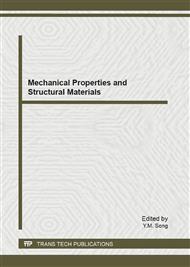p.280
p.284
p.288
p.292
p.297
p.301
p.306
p.310
p.315
Study on Heat Transfer Characteristics of Heat Pipe with Axial “Ω”-Shaped Microgrooves
Abstract:
Heat pipes are devices capable of very high heat transfer and have been widely used in many thermal management applications. Heat pipe with axial ‘‘Ω”-shaped grooves combines a high capillary pumping pressure with a low axial pressure drop in the liquid. An experimental investigation of thermal characteristics of heat pipe with axial ‘‘Ω”-shaped grooves was presented in this paper. The experimental results showed that the work temperatures affect the equivalent heat transfer coefficients obviously, and 20 °C is chosen to be the most appropriate working temperature for heat pipe in present study. The working temperature affects the operational characteristic of heat pipe significantly. When the working temperature is 20 °C, the most efficient working input power is from 80 to 140W. The tilt angles affect the equivalent heat transfer coefficients not so obviously.
Info:
Periodical:
Pages:
297-300
Citation:
Online since:
October 2012
Authors:
Price:
Сopyright:
© 2012 Trans Tech Publications Ltd. All Rights Reserved
Share:
Citation:


